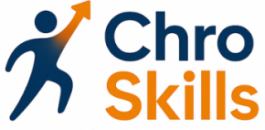
Understanding the Role of a CHRO
Defining the CHRO's Impact
The role of a Chief Human Resources Officer (CHRO) is pivotal in shaping the strategic direction of an organization. As the primary architect of human capital strategies, the CHRO is responsible for aligning the workforce with the company's overarching goals. This involves a deep understanding of mastering leadership personas in HR to effectively guide teams and foster a high-performance culture.
Core Responsibilities
At the heart of the CHRO's duties is the development and implementation of management strategies that enhance employee performance and engagement. This includes:
- Performance Management: Establishing effective performance management processes, including regular check-ins and performance reviews, to drive continuous improvement.
- Talent Development: Creating development opportunities that support both individual and organizational growth, ensuring a pipeline of high-performing team members.
- Culture Building: Cultivating a performance culture that encourages feedback and innovation, essential for long-term business performance.
Strategic Vision
Beyond day-to-day management, the CHRO must possess a strategic vision that encompasses both short-term and long-term objectives. This involves crafting strategies that not only meet current business needs but also anticipate future challenges and opportunities. By leveraging data-driven decision-making, CHROs can refine their approach to talent management and employee engagement, ensuring the organization remains competitive and resilient.
Conclusion
In essence, the CHRO's role is a blend of strategic foresight and hands-on management, requiring a balance of leadership, influence, and a keen understanding of organizational dynamics. By focusing on these core areas, CHROs can drive significant improvements in business performance and employee satisfaction.
Strategic Vision and Planning
Crafting a Future-Ready Strategy
In the ever-evolving landscape of human resources, establishing a robust strategic vision is paramount for any Chief Human Resources Officer (CHRO). This involves not just setting goals but aligning them with the overarching business objectives to drive sustained performance. Strategic vision and planning require a comprehensive approach that encapsulates foresight, adaptability, and an acute understanding of the organizational culture. One of the primary activities for a CHRO is the development of an effective performance management strategy. This entails setting realistic, yet ambitious goals while ensuring that these align with both immediate and long-term business plans. A well-articulated strategy should encompass a detailed performance improvement plan, providing a clear roadmap for achieving high performance. An essential component of strategic vision is anticipating and planning for change, with a focus on cultivating a performance culture that prizes feedback and continuous development. Regular performance reviews and ongoing management processes form the bedrock of building a high-performing team. For team leaders, ensuring the alignment of team members with the strategic vision can significantly enhance business performance. By embedding a culture of continual feedback and regular check ins, a CHRO can foster an environment where each employee is motivated and equipped to contribute effectively to the organization’s success. Furthermore, strategies should incorporate employee engagement initiatives that support talent development. By identifying development opportunities and tailoring them to the strengths and needs of employees, CHROs can ensure the growth and retention of high-potential talent, ultimately driving business performance. To deepen the grasp of these strategies and the essential leadership training required for HR leaders, consider exploring more on essential leadership training topics. This resource provides a comprehensive look into strategies that underpin successful performance management and talent development practices.Leadership and Influence
Mastering Leadership and Influence in HR
Navigating the role of a Chief Human Resources Officer (CHRO) demands an adeptness at leadership and a strategic understanding of influence within an organization. These qualities are pivotal in creating a performance-driven culture that nurtures employee growth and propels the business towards its goals. Strong leaders in HR don't just manage—they inspire. They effectively communicate the company's vision and objectives, ensuring that every team member is aligned with the overall business strategy. This alignment is crucial for driving employee performance and achieving high-end results. Leadership in HR goes beyond traditional management practices; it encompasses an ability to wield influence across different teams and departments. By fostering an atmosphere of collaboration and open feedback, a CHRO can enhance employee engagement and commitment. Regular check-ins and performance reviews serve as foundational tools that facilitate constructive feedback and identify development opportunities. This process not only advances talent development but also cements a culture of continuous performance improvement. In a rapidly evolving business landscape, HR leaders must employ effective performance management strategies to keep up with changing demands. This involves staying informed about best practices and implementing a management process that is adaptive and results-oriented. Such strategies ensure that the organization's talent pool is consistently nurtured and that employees feel supported in their personal and professional growth. Moreover, influencing change and innovation involves employing a strategic management approach where the CHRO plays a pivotal role. By embracing a leadership style that is both adaptive and forward-thinking, HR professionals can lead their organizations through periods of transformation seamlessly. To explore how project cycle management training can enhance a CHRO's leadership capabilities, visit this resource. Ultimately, effective HR leadership is about striking a balance between managing operations and championing people-centric initiatives, which collectively contributes to building a high performing organization.Data-Driven Decision Making
Harnessing Data for Strategic Insights
In today's fast-paced business environment, the ability to make informed decisions is crucial for a Chief Human Resources Officer (CHRO). Data-driven decision making is not just a trend; it's a necessity for effective performance management and achieving organizational goals. By leveraging data, CHROs can enhance employee performance, foster a high-performance culture, and drive business growth.
Data provides valuable insights into various aspects of human resources, from talent development to employee engagement. By analyzing performance reviews and feedback, CHROs can identify areas for performance improvement and development opportunities. This approach not only benefits individual team members but also contributes to the overall performance of the organization.
Implementing a robust management strategy involves using data to inform decisions about talent management and development. This includes identifying high-performing employees and providing them with the necessary support and resources to excel. Regular check-ins and performance reviews, guided by data, ensure that employees are aligned with the organization's long-term goals and strategies.
Moreover, data-driven strategies enable CHROs to create a performance culture that values continuous improvement and innovation. By understanding the metrics that drive business performance, CHROs can implement management strategies that are both effective and sustainable over time. This approach not only enhances the performance of individual teams but also strengthens the organization's competitive edge in the market.
In conclusion, data-driven decision making is an essential skill for CHROs aiming to elevate HR leadership and achieve high-end performance. By integrating data into the management process, CHROs can make informed decisions that support the organization's strategic vision and foster a culture of excellence.
Talent Management and Development
Enhancing Workforce Capabilities
In the ever-evolving landscape of Human Resources, the role of a Chief Human Resources Officer (CHRO) is pivotal in guiding talent management and development. This leadership position is about more than just filling positions; it's about cultivating a culture of continuous growth and inspiring performance improvements across the organization.
Establishing a high-performing organization requires a comprehensive strategy that not only focuses on immediate business performance but also on long-term employee engagement and development opportunities. This involves the implementation of incisive performance management strategies that are aligned with the overarching goals of the business. By fostering a culture of feedback and development, CHROs can ensure that employees receive constructive performance reviews that support their professional growth.
Building a Performance Culture
To cultivate a robust performance culture, CHROs must prioritize the creation of effective performance management processes. These processes include regular check-ins with team members and setting clear, measurable goals that align with the organization's vision. Such an approach ensures that employees are not only aligned with business objectives but are also motivated to exceed expectations, thereby enhancing overall employee performance.
One effective management strategy is to implement performance improvement plans that focus on employee strength while addressing areas of opportunity. These plans should be tailored to individual needs, promoting the idea that development is a continuous journey. This requires precision in evaluating performance metrics and the ability to interpret data to make informed decisions.
Investing in Talent Development
A forward-thinking CHRO also recognizes the importance of talent development as a key factor in achieving high performance. This means establishing programs that provide ongoing development opportunities for employees at all levels within the organization. Whether through workshops, seminars, or mentoring programs, offering avenues for growth helps in retaining top talent and building a resilient workforce.
Furthermore, investing in a solid talent management strategy positions the organization to effectively navigate changes and innovate swiftly. By having a team equipped with diverse skills and capabilities, the organization remains competitive and agile in an ever-changing business environment.
Ultimately, the success of a CHRO in managing and developing talent hinges on their ability to integrate these best practices into their leadership strategy. This synchronization not only propels individual performance but drives the collective advancement of the entire organization.
Navigating Change and Innovation
Driving Transformation with Adaptability
In the ever-evolving landscape of Human Resources, the ability to navigate change and foster innovation is crucial for maintaining a competitive edge. The Chief Human Resources Officer (CHRO) plays a vital role in guiding the organization through transitions and ensuring the alignment of business strategies with the company’s dynamic environment.
As organizations strive to achieve high-end performance, creating a resilient performance culture becomes a critical aspect of the CHRO's responsibilities. This involves developing strategies that support the continuous growth and adaptation of both employees and the company. Effective performance management strategies help build an environment conducive to change, where employees are encouraged to contribute to new directions and business goals.
To successfully manage change, the CHRO must prioritize communication and employee engagement. Regular team meetings and performance check-ins ensure that team members feel heard and involved in the change process. These interactions also provide valuable feedback, enabling leaders to make informed decisions that align with the organization’s objectives. Understanding the perspectives of different teams can lead to the development of practical solutions and ultimately drive business performance.
Moreover, a focus on talent development and providing ample development opportunities equips employees with the necessary skills to thrive in a changing environment. This includes implementing development strategies that promote continuous learning and adaptability, supporting the growth of a high-performing organization. High performance is achieved when employees are prepared to tackle new challenges and embrace innovation.
Furthermore, during periods of change, it is essential to evaluate and refine management strategies. This ensures that the management process remains effective and aligns with the long-term vision of the organization. Incorporating best practices from successful change initiatives can enhance the overall performance culture, empowering employees to pursue strategy-driven goals with confidence and clarity.
Ultimately, the CHRO’s ability to adeptly manage and lead change directly influences the company’s growth trajectory and its capacity to achieve sustained success.













